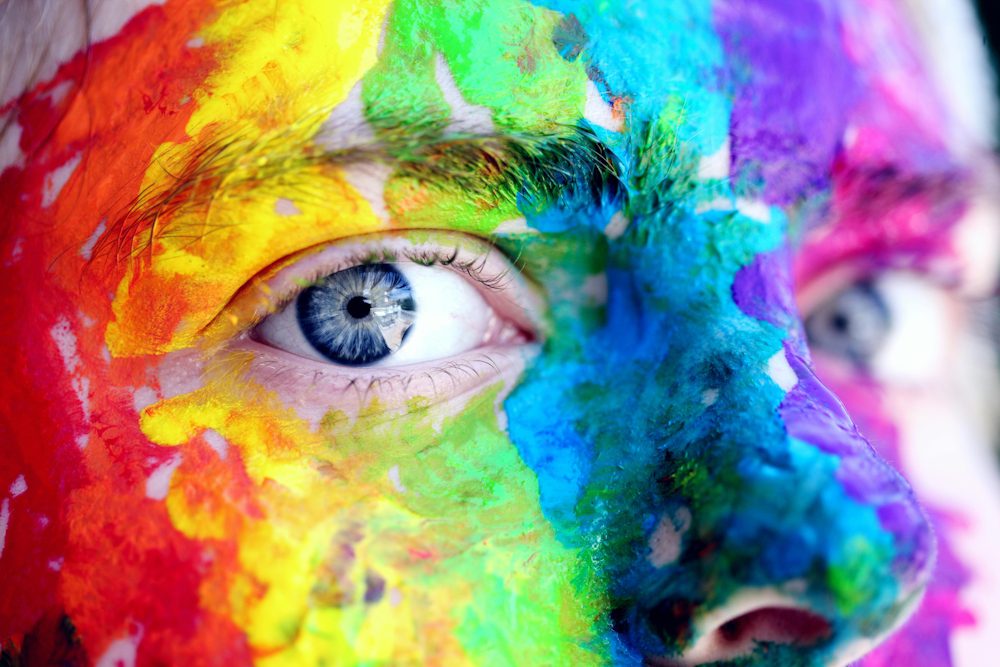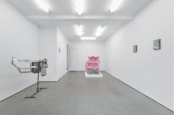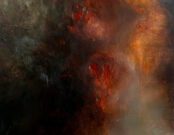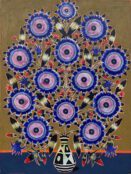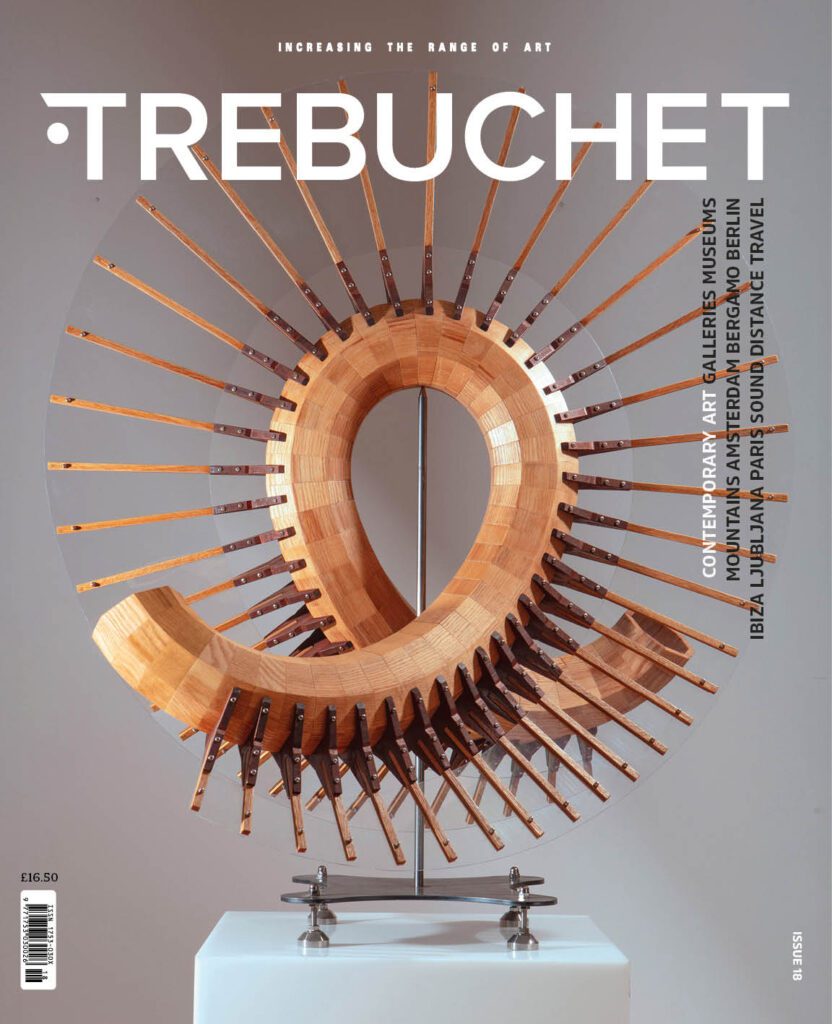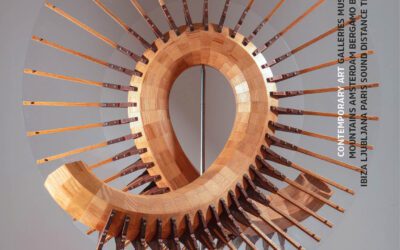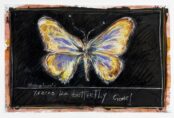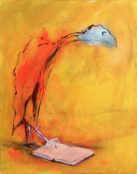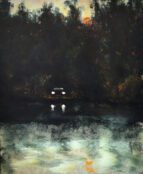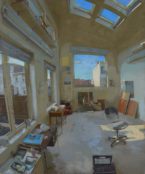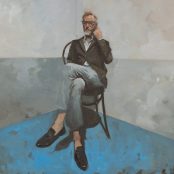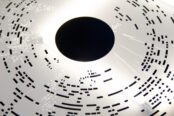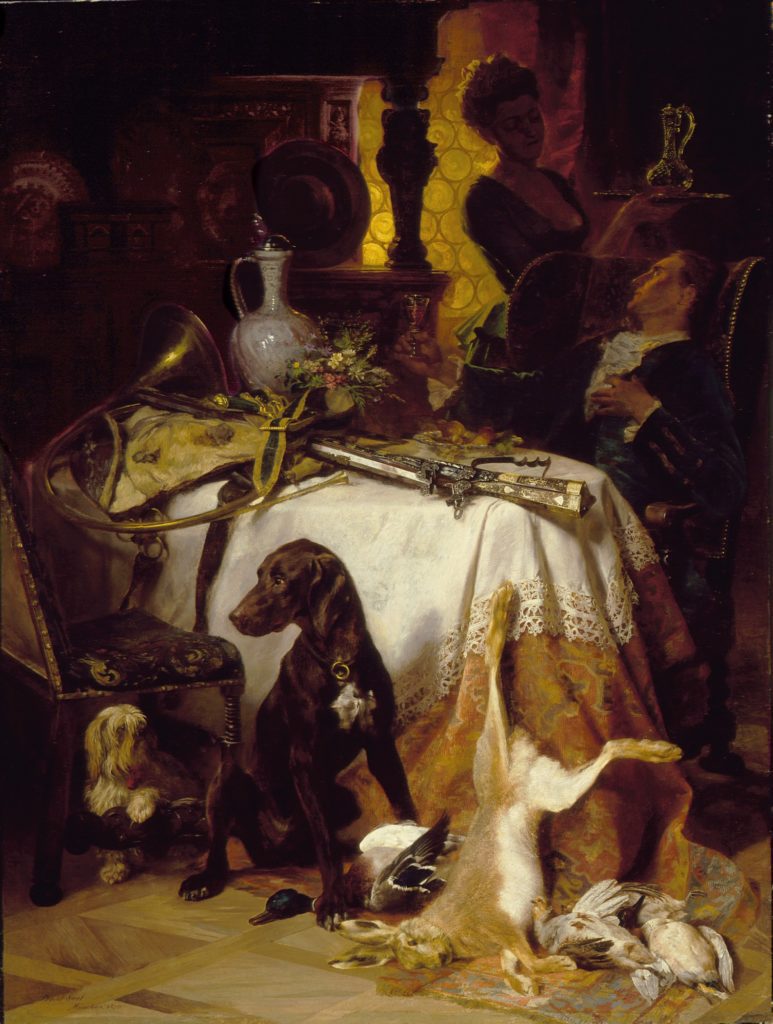Ahead of our issue on Art and Psychology Trebuchet interviewed renowned psychoanalyst, author, and art commentator Jamieson Webster to talk about how art works for the viewer and the artist. Themes she’s explored as a psychoanalyst in New York City and as a part-time faculty member at The New School for Social Research and her various articles for Artforum, The New York Times, and The New York Review of Books.
Tell me about your background as a writer on art.
Jamieson Webster: If you realise how little writers get paid, the art world pays you a little bit more. So that’s where a lot of the work I’ve done comes from. So I’ve written about Louise Bourgeois, John Currin, and Carroll Dunham. John Currin was for Gagosian. I did two museum shows for Louise Bourgeois, the Jewish Museum and the Museum of New South Wales in Australia. Bracha L. Ettinger, who’s also a psychoanalyst as well as an artist, I wrote about for the magazine Art Forum. I did a catalogue essay for Roe Ethridge. I’m missing a bunch of them. There’s others, like Diane Severin Nguyen. She’s a really interesting young video artist.
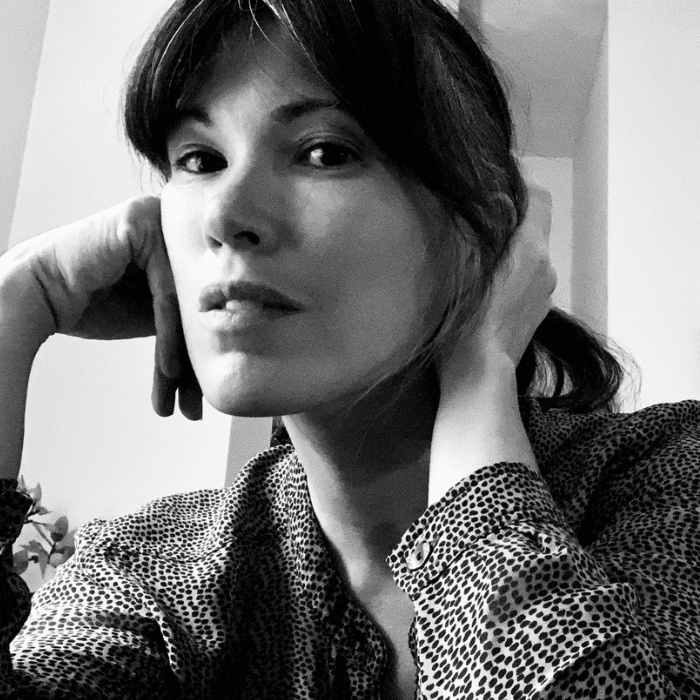
Is your work an extension of your psychotherapeutic practice or something else?
It’s complicated. Because I feel with each artist, I do something different. I’m a writer, and a psychoanalytic theorist, and I am a professor at The New School. So on the one hand I work theoretically and then on the other hand, I have a clinical practice and a clinical ear. It’s a combination of the two that I bring to the table but I feel that with every artist something different comes up. In my mind it’s not that I psychoanalyse the artists, rather I do something different with each one.
With Louise Bourgeois, I looked at her written record of her own dreams and analysis. In some ways, I was taking her at face value, what she brought to her own art through her writing. But with John Currin, the subject of this study was men and I wanted to see what he had to say about men. But obviously I write from a psychoanalytic lens.
Sanya Kantarovsky, the Russian painter, paints these subjects that are all very melancholic and abject and beaten up. So for me, the question was: What is this beating fantasy in his artwork (laughs)? It really is just what strikes me. Carroll Dunham and I had a long conversation about one of his shows where he had people looking at pictures in his pictures. So I was asking what the hyper-visual meta-visuality was in his paintings.
So there’s no Jamieson Webster thread through the whole thing.
No, because the thing about psychoanalysis is the singularity. Freud didn’t have a theory of sublimation really. He talked about it a little bit, but he didn’t say much about it. And Lacan as well. So you can talk about works of art from a psychoanalytic angle, but we’re not trying to make a mega theory of any kind.
Are there any particular techniques in psychoanalysis that you’d suggest to people when they’re investigating an art piece?
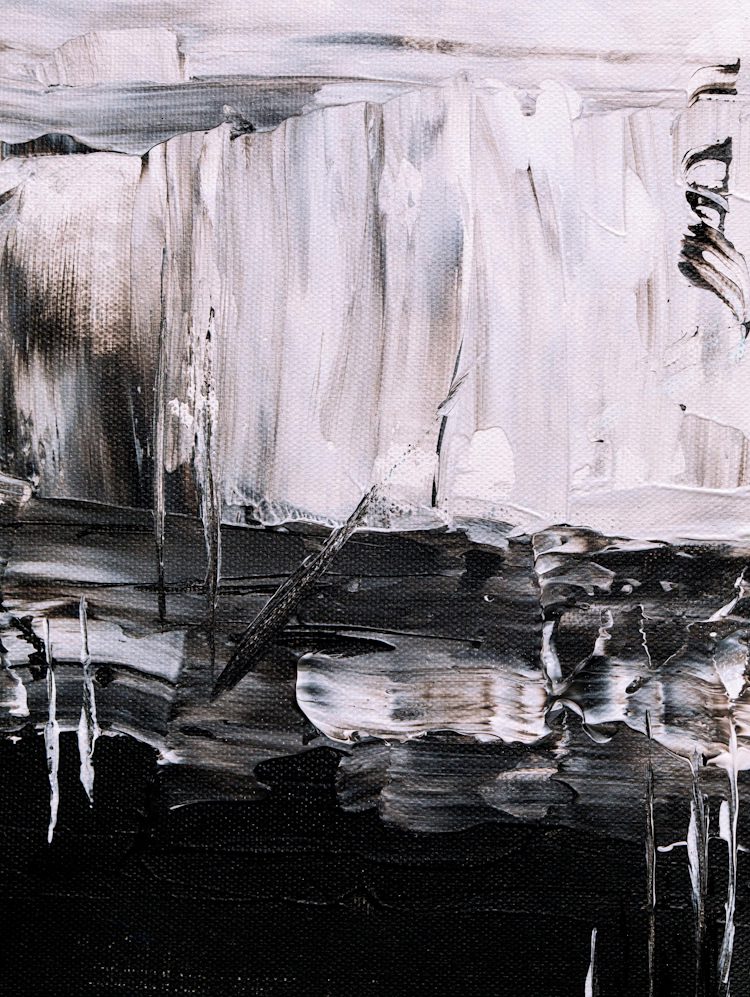
Well, I wrote in the Brooklyn Rail, a piece called ‘I’ll see you there’ (https://brooklynrail.org/2023/05/art/Ill-See-You-There), which was about visual division and I guess my concern was that we’re oversaturated with images and we have a problem looking at our phones all day.
And with social media, we are staring at each other’s lives and I found in Jacques Lacan a different theory that is more positive, because he has a lot on the gaze and feminists have ideas on male gaze and film theory often talks about this paranoiac or fetishistic looking that we do. But in Lacan’s theory, he has an idea that art tames the gaze. That it makes you drop your gaze, and opens up to a different relationship to visuality and sensual visuality. So I talked a little bit about that, because I feel we all need a bit of it. Because we don’t know how to stop looking at our phones.
Lacan said novels and paintings have to stop being written or painted at some point, the artist has to declare a work finished and you’re riding the wave of their desire in the start to finish of an artwork. Encountering that is really helpful because we don’t know how to stop.
Lacan talks about the relationship to the particularity of an artist’s investment in a work and the way that they invest in it and leave it behind, then it’s up to the viewers to pick up their relationship to that formal structure. And so it’s recontextualized by an audience which he said was a miracle. It’s a miracle that the specificity of one person’s capacity for enjoyment and ending of their enjoyment would have any relationship to another person’s at all. Because, psychoanalytically speaking, the reason why all our relationships are terrible is that our enjoyment has nothing to do with our partner’s enjoyment. And even though they sold us this love story it doesn’t exactly work out that way, does it?
But what’s interesting is that while Lacan called it non-relation, there is no sexual relation, some relation happens to an artist. We fall in love with artists, artists speak to us, they speak across time. And that’s miraculous. So then the question was, if art does something to us, how does something that is valueless create such value? You could talk about the marketplace or whatever, but it’s not that, what does it hold? Why does it hold value? And the value has something to do with our own experience of desire? Now, all psychoanalysts say this is very enigmatic, but it happens.
With regard to questions about the market or what counts as good art as opposed to what is sensationalistic, I don’t know, that’s for art historians to battle out? Personally, I’m interested in artists, what they’re up to, and the scope of their work, the body of their work, and to try to say something about it, which may or may not match up with the viewers.
I haven’t thought about Taylor Swift but I’m fascinated. The fact that she’s this billionaire who’s endlessly love forlorn. And a bit dorky. I guess the thing is that she’s not cool. She’s 100% not cool. And so the girls get into this aspect of what it means to be a bit on the outside or a bit cast aside, except for the fact that she’s a gabillionaire and world’s biggest artist. So they get to have it both ways. They get to win and play with her very strong revenge narrative as she’s taking all these men to task.
So the viewer gets the whole thing, they get all of it, you get to be the outcast, and you get to be the bitch, and you get to be the winner, and you get to be the loser. There’s something funny about that. And also the splitting of it, that you can be the loser but secretly be the winner or you can be the winner, but secretly be the loser and not really make each own up to the other. She’s done an amazing job of creating this very, I don’t know, warped experience if you asked me.
Do you look for the logic within the art, if logic is the right term?
I look for the logic at work! Artists are funny, because some talk about themselves, and some don’t, unlike Taylor Swift. Though how much is herself or how much is the persona is up for debate but nevertheless it’s her. Whereas a lot of artists can be very tight lipped as they want the art taken on face value. And so I have to take it at face value, I have to figure out how to work with just what’s in front of me as opposed to anything that they want to say about their lives or history.
Louise Bourgeois being one of the few people who did talk about her life and talked about her life in relation to her work. So she was a very different example. I had insane amounts of material because I worked with the Easton foundation that has her diaries and her notes on her analysis, her notes about psychoanalysis, and everything that she said about each of the works and what it had to do with her family history, and so on. And she didn’t want you to reduce her works to her personal trauma or family history, but she wanted you to see how they’re running alongside each other.
How does that work?
It’s interesting because she says that my suffering, I don’t think that art makes it go away. It’s what I used to make art and I use it again and again. My art does not create sanity, art arises from insanity that is expressed over and over again. I found this really lovely. I thought it was also a message to psychoanalysts to not think that you reduce one to the other, and one does not cure the other or vice versa.
By contrast, Caroll says nothing about his life, but he has very interesting ideas. He is someone who makes people wonder why this guy paints genitals his whole life? I love him for never backing down, never saying anything about it and never stopping. He’s an old artist and he just won’t stop painting genitals. So it became very interesting to think about what it means to look at genitals. I got into the whole psychoanalytic logic of that. Freud says that kids want to look at people’s genitals. They want to show you their genitals and they want to look at people’s genitals. So what’s going on there? So I just took off from that place, which was just a way to talk about it rather than to say what Carroll Dunham is doing as if he is traumatised in childhood by genitals, etc. I wanted to talk about his work on the deepest existential and respectful level. Perhaps because on the one hand genitals are funny because they’re the most unaesthetic part of the body. Freud says evolution hasn’t caught up with our genitals; he says they’re rather ugly. But he also says, because we cover them, and because they’re forbidden, and because as a kid you don’t know what they have to do with you, but you have some idea that they have something to do with making you, you want to look and it’s as if you want to look into your own creation. So what is this? What is this guy doing when he’s creating the site of creation? What is he trying to say about creation in general? So that that’s where I went off with the question, and found a t logic in his work.
Is there a discipline for you, in not trying to unpick too much what the artist is thinking to spoil the magic?
Yes. And there’s been too much bad psychoanalytic commentary on art. So I try to not be reductive and not to understand the artwork and not do psycho-biography. That’s a huge mistake. I want to show how psychoanalysis can help you think about something in an interesting way or from an obscure angle. To try to take the artists on their own terms, which is what you would do as a psychoanalyst with a patient, not to interpret something to death against what someone might want to say or put before you. So for me, that’s always the question whenever I go into something. How to be playful about it – have fun with it and have fun with the way they have fun.
Do you think artists can be playful and use Artificial Intelligence?
I talked to some artists about this. What’s funny is that all these people are in a breakdown about AI making doomsday prophecies. I’ve talked to some AI theorists, people who understand the workings of it, and they think this is just fuelling their stock prices. But they said, what’s interesting to them is that (the art and AI question) seems to be a cover story for the fact that these people are gonna kill jobs and make a lot of money and do strange things. While we are worried about the end of the world and helping these companies feel powerful, it is the artists who are having the most fun with AI and have the least concern with it. In fact they love it. They always love a constraint, you have to ask the right question of self as an artist, so they are the ones who are playing with AI. All of them are! They’re all fucking around with the AI image maker. It’s great fun for them. I love the fact that they don’t feel threatened. They have an artist’s belief in their own capacity to make art and the idea that you use whatever you use, whatever’s around at whatever point in time. They’re like ‘bring it on’.
That’s a fantastic way to end, thanks.
Bring it on!.
Jamieson Webster Interviewed Sunday 4th August 2024
Jamieson Webster portrait courtesy of Jamieson Webster
Jamieson Webster, New School Faculty Page
Main image by: Alexander Grey
Art Image by Steve Johnson
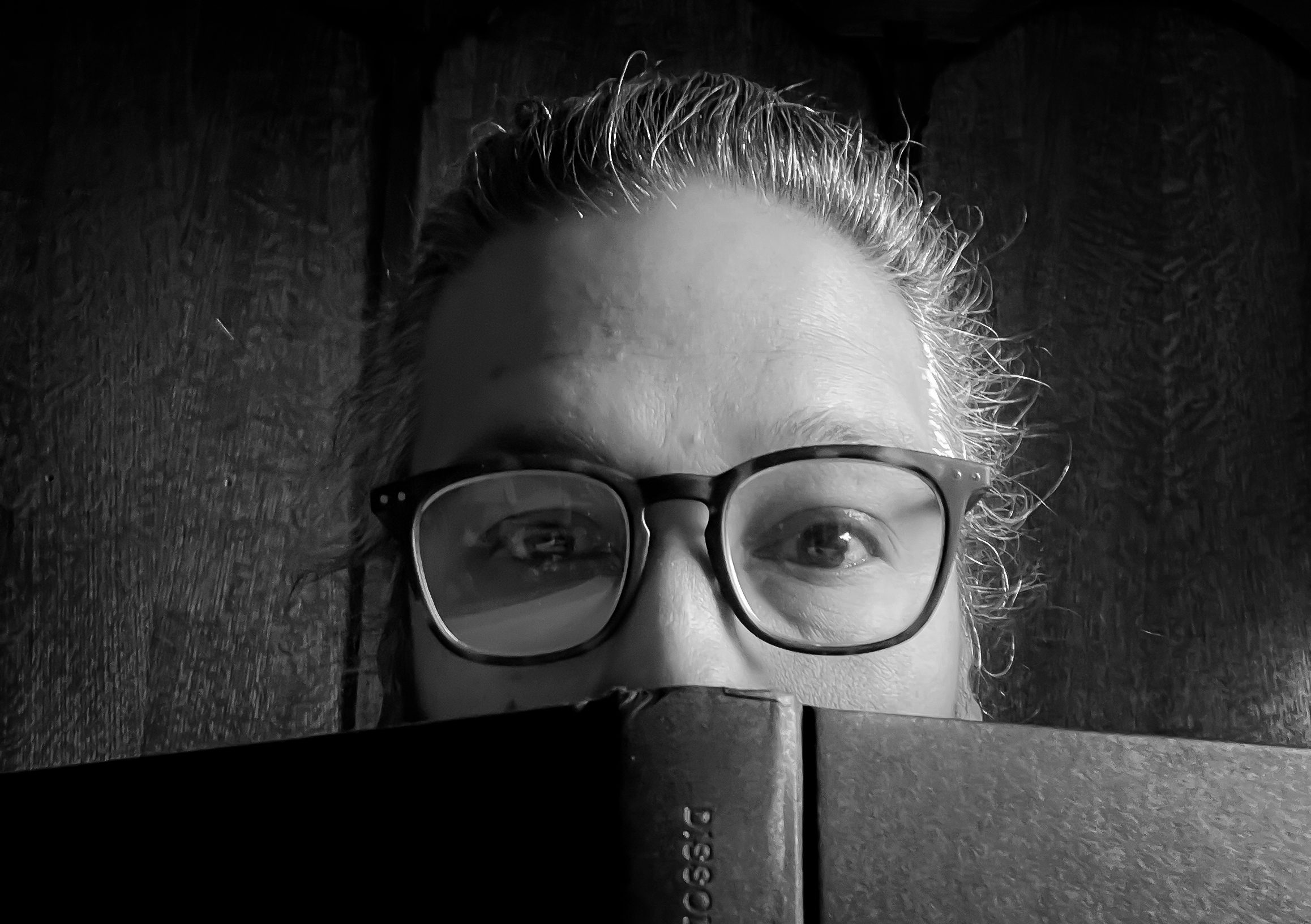
Ex-London based reader of art and culture. LSE Masters Graduate. Arts and Culture writer since 1995 for Future Publishing, Conde Nast, Wig Magazine and Oyster. Specialist subjects include; media, philosophy, cultural aesthetics, contemporary art and French wine. When not searching for road-worn copies of eighteenth-century travelogues he can be found loitering in the inspirational uplands of art galleries throughout Europe.

